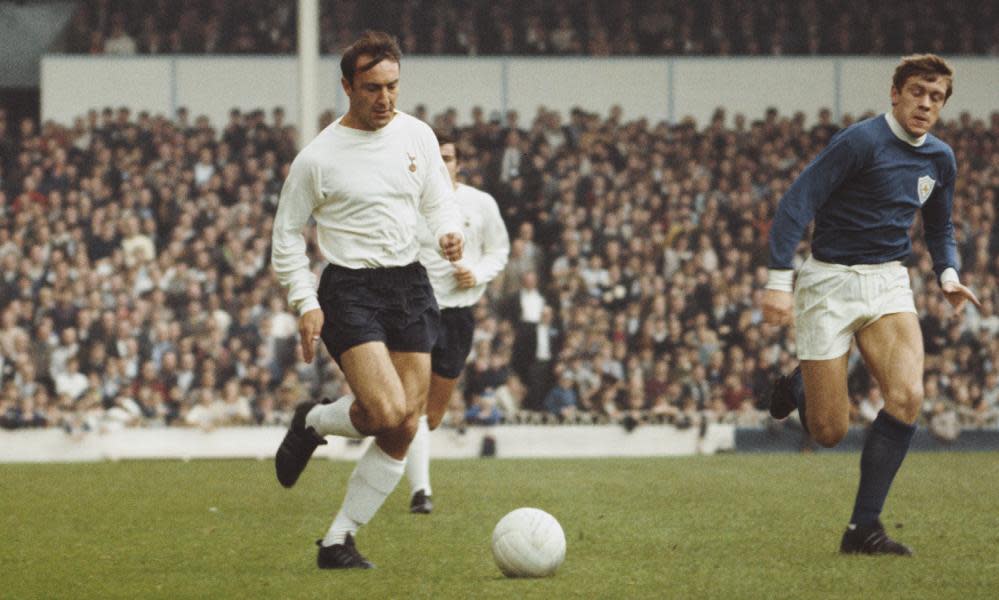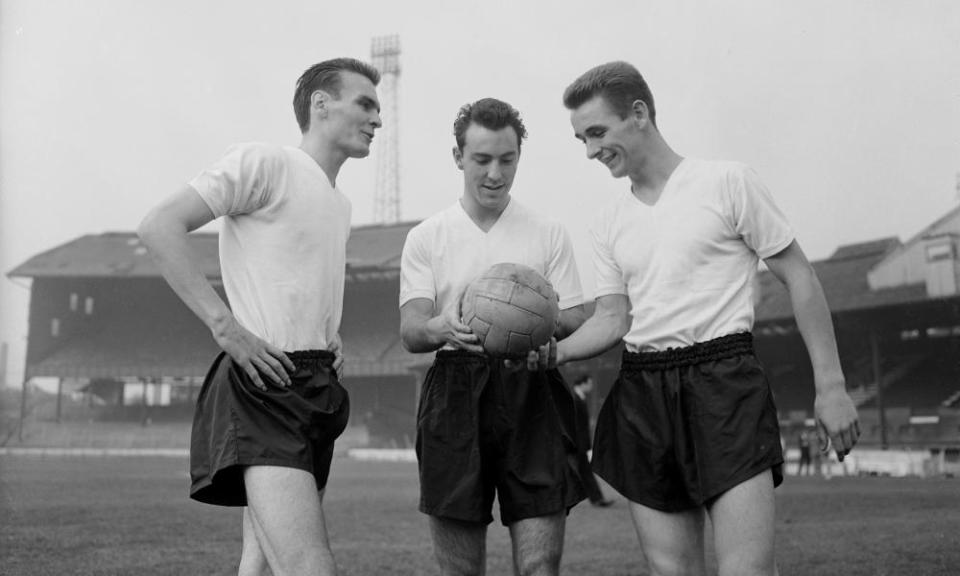Jimmy Greaves redefined perception of what a centre-forward should be

For those of us too young to have caught the end of Jimmy Greaves’s playing career, there was always a slightly awkward adjustment to be made.
He remained the goalscorer to whom all others were compared for two decades after his retirement in 1971 and yet it was hard to equate his legend with the slightly tubby, moustachioed bloke in the V-neck jumper who was all over ITV. But then you see the footage, see the speed and elegance, the capacity to beat defenders with a subtle change of pace or direction and, above all else, the finishing.
And in that sense the physique is significant, for Greaves was in the vanguard – in England at least – of a new conception of what the centre-forward should be. He was not the classic English No 9. He was not Nat Lofthouse or Tommy Lawton. He was not some imposing physical presence there to batter away at the centre-half. Initially he had not been a centre-forward at all. At Chelsea, where he began his career, Greaves was an inside-right, playing behind Ron Tindall or Charlie Livesey.
Related: Jimmy Greaves: the Boys' Own hero who stole the heart of a nation | Kevin Mitchell
In that Greaves followed another great English goalscorer, Brian Clough. He made his debut in 1955, Greaves two years later. It was a time of radical change in English football. The 6-3 debacle against Hungary at Wembley in November 1953 and the 7-1 defeat in Budapest six months later had made undeniable just how moribund English tactical thinking had become.
Brazil’s success at the 1958 World Cup with a 4-2-4 confirmed that the W-M, the default formation for three decades, had had its day. All the old certainties had gone; everything was open to reinterpretation. Lofthouse’s performance in the 1958 FA Cup final demonstrated that old-fashioned centre-forwards could still be effective but it was no longer the only way.
When a miserable December had ended Middlesbrough’s promotion hopes earlier in 1957-58, their manager, Bob Dennison, was left with nothing to play for, so he began to experiment, fielding Clough alongside Alan Peacock, an angular, powerful centre-forward described by Walter Winterbottom, the England manager, as “the finest header of a ball in the country”.
Clough, by then, with his astonishing goals record and self-assurance, had guaranteed himself the No 9 shirt and when he and Greaves played together in a 2-1 defeat by Wales for England Under-23s in April 1958 and in a 3-2 defeat by Sweden in a full international in 1959 it was with Clough at centre-forward and Greaves at inside-right in a W-M.
But what Middlesbrough – and various other clubs – did was different, playing two centre-forwards alongside each other, with a winger on either side and an inside-forward behind. After a failed attempt in a 4-1 defeat away to Peru in 1959, when Greaves was paired with Bobby Charlton, England shifted to that shape for the 9-3 victory over Scotland in 1961. Greaves partnered Bobby Smith, with Johnny Haynes behind and Bryan Douglas and Charlton wide, as Winterbottom began the metamorphosis to the 4-4-2 with which Alf Ramsey would win the World Cup five years later.
The twin-striker system, as it was known, was one of the key incremental steps in the transition from W-M (3-2-2-3) to a back four. That process had begun in Brazil and central Europe 10-15 years before it got under way in England but, once the revolution came, it was rapid and went further than it had elsewhere.
That meant fundamental changes for everybody, as Dave Bowen, who was the Wales manager between 1964 and 1974, explained: “With three defenders it was different. The back on the far side was covering behind the centre-half so the winger always had space from the crossfield pass. With four defenders the backs can play tight on the winger and he’s lost his acceleration space. Without that, the winger’s finished.”
The British game had been about wingers beating their full-back and getting crosses into the box for the big No 9 but, as back fours neutralised them, new modes of attacking had to be found. Which is where forwards such as Clough and Greaves with their extraordinary goals records came in. Greaves scored 366 goals in 528 league games, Clough 251 in 274 (although only one of his goals came in the top flight).
Related: Jimmy Greaves was a genius, the purest finisher England has produced | Richard Williams
Although equally slight Clough was more powerful, a fine volleyer; Greaves more graceful, his acceleration smoother. Both were exceptional finishers but neither were built like classic No 9s. “It was all about ghosting into space and hoping a teammate had spotted me on the run …” Greaves wrote in his autobiography, or “… taking up a position where I thought the ball was going to end up”.
It was only after joining Milan in 1961, where he played just ahead of Gianni Rivera, that Greaves became a regular out-and-out centre-forward. When he returned to England with Tottenham after a few months, it was initially to play off the bustling Bobby Smith, and he later formed a strike pairing with Alan Gilzean.
Greaves’s finishing remained consistently extraordinary throughout. Even in Milan he scored nine goals in 12 Serie A games. “I’d pass the ball, stroke it, sidefoot it, chip it or drive it into the net depending on the situation,” he said. “What I did in front of goal came naturally to me. Quite often I didn’t even think about it. I just did it.”

Clough similarly was somebody primarily respected for his technique and his ability to get in front of a marker. “He was a brilliant striker of a moving ball,” said his Boro teammate Billy Day. “His timing was perfect. It was a miracle if he shot over the bar. He used to have his knee always at the right angle to the ground.”
Both also regularly faced the accusation they didn’t do enough without the ball, that they were poachers pure and simple who contributed little beyond their goals. And perhaps to modern eyes, used to universal forwards, that is the case.
But Clough and Greaves were modernity once, exponents of a style of play that became possible only because of the radical tactical changes they helped drive. As W-M became 4-4-2, they redefined the conception of what it was to be a centre-forward.

 Yahoo News
Yahoo News 
